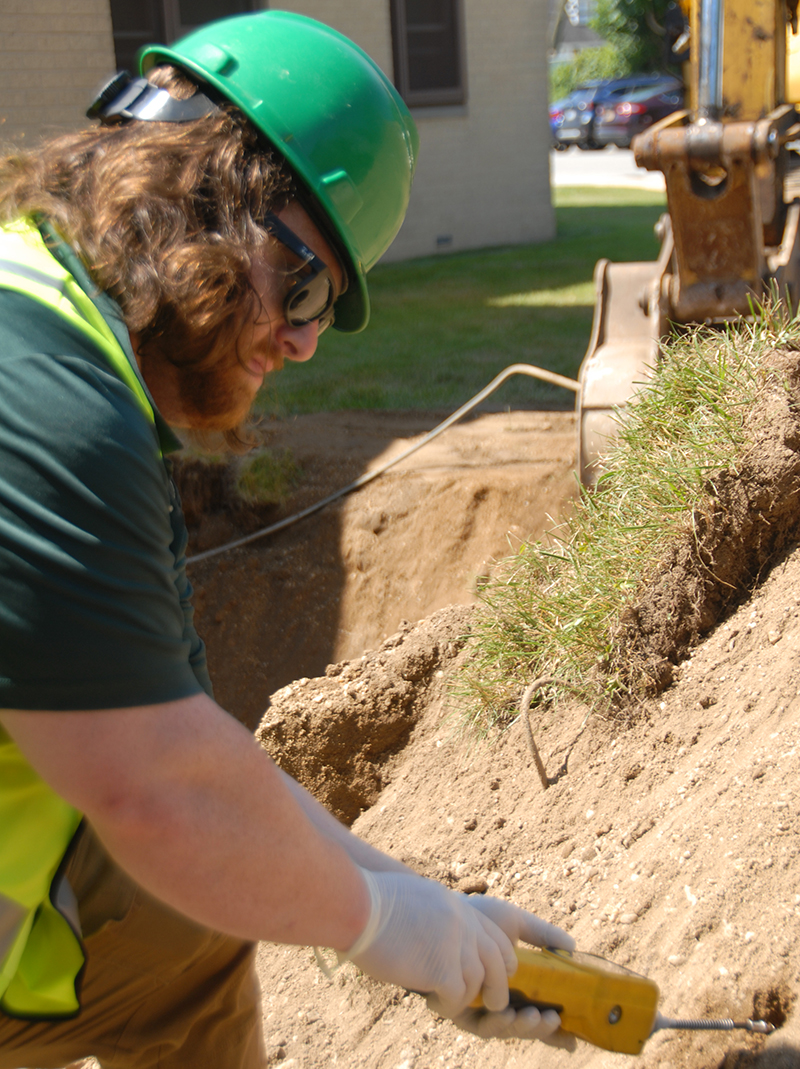Part 361-5 Construction and Demolition Processing Facilities Marketing F4 and F5 Materials as per Part 360.13 Restrictions
On July 22, 2023, the New York State Department of Environmental Conservation (NYSDEC) promulgated the new Part 360 series. While there are several major operating changes, there are even more significant and major changes to the marketing of the product materials. The new Part 360.13 has five categories: Fill Type 1 through Fill Type 5 [“F1–F5”]. Please see Walden’s guide, An Update to the Introduction to the NYSDEC Part 360 Rules, for more information on the five classes.
Clarification of these rules for the marketing of F4 and F5 will prevent major enforcement cases and enforcement actions with fines that will force a business to close.
Physical Composition of the Different Excavated Fill Types
| Fill Type 1 | Exclusively soil, sand, gravel, or rock with no signs of historical and current contamination/no petroleum odors generated outside of New York City. |
| Fill Type 2 | Exclusively soil, sand, gravel, or rock with no signs of historical and current contamination/no petroleum odors generated. |
| Fill Type 3 | Exclusively soil, sand, gravel, or rock with no signs of historical and current contamination/no petroleum odors generated with de minimis amounts of brick, concrete, or asphalt. |
| Fill Type 4* | Soil, sand, gravel, rock, brick, concrete, asphalt, and granular compactible non-soil at no volume limit. The material with signs of contamination can be accepted but must meet the chemical tests. |
| Fill Type 5* | Soil, sand, gravel, rock, brick, concrete, asphalt, and granular compactible non-soil at no volume limit. The material with signs of contamination can be accepted but must meet the chemical tests. |
*Fill types 4 and 5 are physically identical. They vary in the chemical composition allowable and the intended end use.
Chemical Limits for Different Excavated Fill Types
| Testing Required? | Chemical Limits | |
| F1 | No | N/A |
| F2 | Yes | Part 375-6.8(b) Chemical Levels for Residential (Public Health) and Groundwater. |
| F3 | Yes | Part 375-6.8(b) Chemical Levels for Residential (Public Health) and Groundwater. |
| F4 | Yes | Part 375-6.8(b) Chemical Levels for Residential (Public Health) and Protection of Groundwater except cPAHs must not exceed 3 mg/kg benzo(a)pyrene (“BAP”) equivalent. No greater than 1% by weight for asbestos. In Nassau and Suffolk Counties, the cPAHs must meet the 375-6.8(b) levels for Groundwater, i.e., the BAP equivalent does not apply. |
| F5 | Yes | Must meet Part 375-6.8(b) Chemical Levels for Commercial (Public Health) for heavy metals, plus Residential (Public Health) and Protection of Groundwater for non-heavy metals chemical limits except the cPAHs must not exceed 3 mg/kg benzo(a)pyrene (“BAP”) equivalent. No greater than 1% by weight for asbestos. |
End-Use Restrictions for Different Excavated Fill Types
| End-Use Restrictions | |
| F1 | None |
| F2 | Not used in agricultural land used for livestock and crops for people. |
| F3 |
It cannot be used in agricultural land used for livestock and crops for people. Must meet engineering criteria. At residential properties, it must be under an impermeable surface or three inches of Fill Type 1 or 2 or commercial soil. |
| F4 |
Engineering use in embankment or subgrade in: a. Transportation corridors; or in b. Sites with in-situ materials containing higher chemical levels In both cases, the material must be placed above the seasonal highwater table. (Prohibited for use in Putnam, Westchester, Nassau, and Suffolk counties, unless generated in that county.) |
| F5 |
It cannot be used in Nassau, Suffolk, Putnam, and Westchester counties. Engineering use in embankment or subgrade in engineering use under foundation and pavement above seasonal highwater table. |
NYSDEC no longer uses the term soil but instead uses excavated fill material. Based on these regulations, all excavated fill material leaving a Part 361-5 facility requires chemical testing prior to leaving the facility and its final usage. The usage of excavated fill material and any mixtures of fill with excavated fill material is restricted to its physical composition and chemical levels.
Improperly placed material is viewed by NYSDEC as an illegal landfill and, as such, will include the Part 361-5 facility into the liability for cleanup, which is extremely expensive. In order to protect the liability of the Part 361-5 facility, the tracking form is critical to prove that the transporter and the final receiving facility exactly knew the fill type that they were accepting. Also, there are several other methods to minimize the facility’s liability through its Facility Manual procedures.
Based on this, when a Part 361-5 facility mixes F1, F2, or F3 with more than de minimis amounts of concrete, asphalt, or granular compactible non-soil material, it automatically becomes F4, F5, or worse, depending on the chemical results. NYSDEC will not allow F4 or F5 material to be sorted down to F2 or F3 material. Any deviation from the above-listed end-use restrictions requires a case-specific Beneficial Use Determination. Also, all material that fails the F5 chemical levels must be disposed of unless a case-specific Beneficial Use Determination is granted.
Walden staff have spent significant resources researching these legal, regulatory, and technical issues. They have developed wide-reaching expertise regarding these regulations and can provide expert guidance for facilities that handle Construction and Demolition waste, thereby minimizing its potential liability. Contact Walden at 516-604-5684 for assistance with the permitting and management of your facility. Our solid waste experts are prepared to walk you through all pertinent regulations.

Contact Walden at 516-604-5684 to learn more about Part 361-5 rules and how we can help you ensure compliance.
